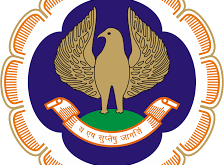25-06-2025 – India has made significant strides in HIV prevention and treatment over the past decades. Yet, one of the most crucial links in the chain—partner testing—remains worryingly weak. Nationally, about 36% of partners of People living with HIV are tested, leaving critical gaps in diagnosis, care, and prevention.
In Agra, however, a quiet transformation is underway—one that is not only changing lives locally but also offering a scalable model for the rest of the country. Spearheaded by the Community-Based HIV Testing and Linkages (CBHTL) project, this shift is proving that empathetic, community-centered approaches can deliver extraordinary results. A little before the end of the second quarter, of 2025 Agra had achieved a remarkable 43.59% testing rate among spouses of HIV-positive individuals higher than the national average national average.
A Project Rooted in People, Backed by Policy
Led by AHF India Cares and implemented by Palladium, CBHTL operates in close collaboration with national and state-level health systems. Now in its fifth year, the project spans 8 states and 31 districts, supporting India’s broader HIV response through strategic testing, counseling, and linkage-to-care services.
In 2024 alone, CBHTL reached over 270,000 individuals with HIV screening services, with a target of 306,000 screenings set for 2025. A 95% linkage-to-care rate speaks to the project’s efficiency—but it’s the innovation at the grassroots level, particularly in Agra, that’s noteworthy
Understanding the Challenge
Partner testing is more than a health service—it’s an emotional, social, and logistical challenge. In cities like Agra, where economic activity is driven by tourism and industries such as leather and footwear, thousands of seasonal migrant workers live away from their families. For these individuals and their spouses, the decision to get tested is tangled in fear, stigma, and physical separation.
Traditional, facility-based models often fail to reach such populations. Recognizing this, the CBHTL team in Agra reimagined the approach—putting empathy, flexibility, and strategic coordination at the heart of its interventions.
CBHTL’s success in Agra rests on three key strategies:
Empathetic Couple Counseling: Conversations around HIV can be difficult. CBHTL prioritized couple-based counseling to create safe, judgment-free spaces for dialogue. By framing testing as an act of mutual care and empowerment—rather than obligation—counselors helped reduce fear, build trust, and support informed decisions.
Client-First Testing: To overcome stigma and logistical barriers, the field team, upon request of the clients, took testing services directly to them in the privacy of their homes instead of testing camps or the ICTCs. This mobile, privacy-conscious model-built confidence and ensured access for those who might otherwise be left out.
Bridging Distances Through Coordination: For partners separated by migration, CBHTL established strong referral systems with Integrated Counseling and Testing Centers in neighboring districts. With crucial support from Sarojini Naidu Medical College, the project ensured that testing and linkage to care could happen seamlessly, regardless of geography.
Results That Resonate
In just the first four months of 2025, Agra reported a 43.59% testing rate among all eligible partners—already above the national average of 36%. These aren’t just statistics; they reflect lives protected, stigma overcome, and new pathways to care opened.
“The successful demonstration of partner and spouse HIV testing by AHF and Palladium in Agra stands as a beacon of innovation and impact. By reaching those closest to known positives, this model bridges critical gaps in early detection. It directly supports the global goal of the first 95—ensuring more people know their status. This initiative proves that strategic partner testing isn’t just effective, it’s essential. Congratulations to the Palladium team for delivering a replicable, scalable model that can transform community-level HIV response,” said Dr. V. Sam Prasad – Country Program Director, AHF India Cares.
A Scalable Blueprint for India and Beyond
What makes the CBHTL Agra model powerful isn’t expensive infrastructure, but its simplicity, adaptability, and human-centered design. It aligns with national priorities while demonstrating how implementation can be refined for local realities.
By prioritizing couple counseling, decentralizing service delivery, and coordinating across districts, CBHTL has created a model that can—and should—be replicated across similar high-migration, high-stigma contexts across India.
The story of Agra reminds us that lasting change often begins quietly—in living rooms, in small conversations, in the trust built between a counselor and a couple. And when these moments are multiplied through smart policy and compassionate implementation, the impact is nothing short of transformational.
 Newspatrolling.com News cum Content Syndication Portal Online
Newspatrolling.com News cum Content Syndication Portal Online







